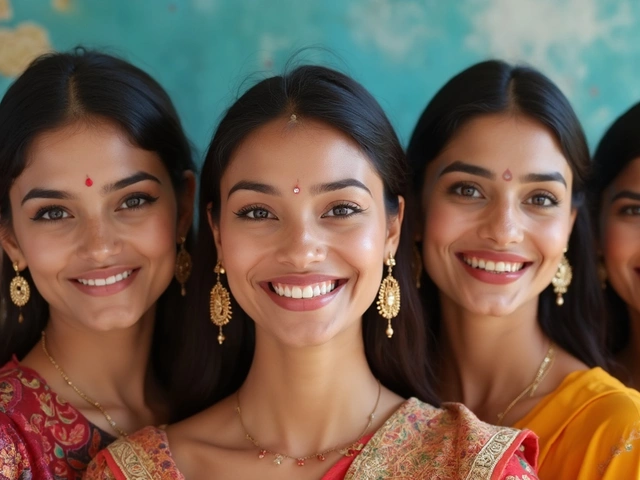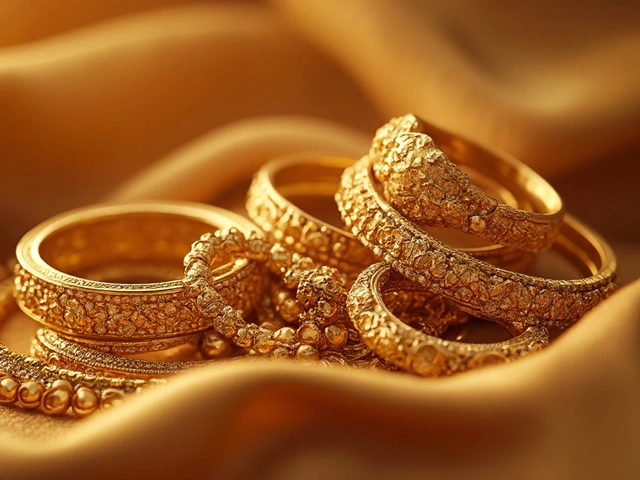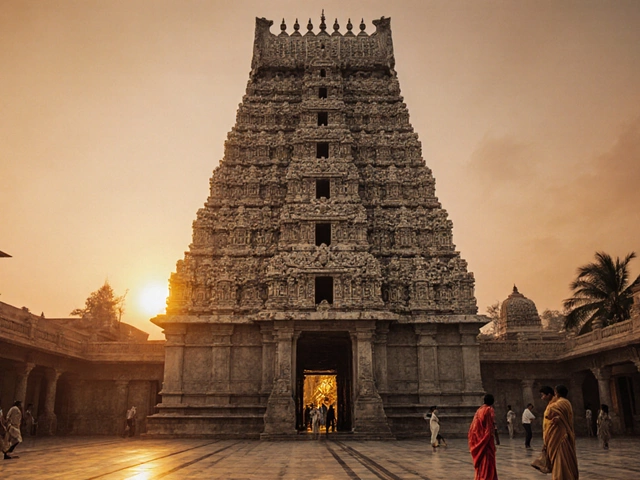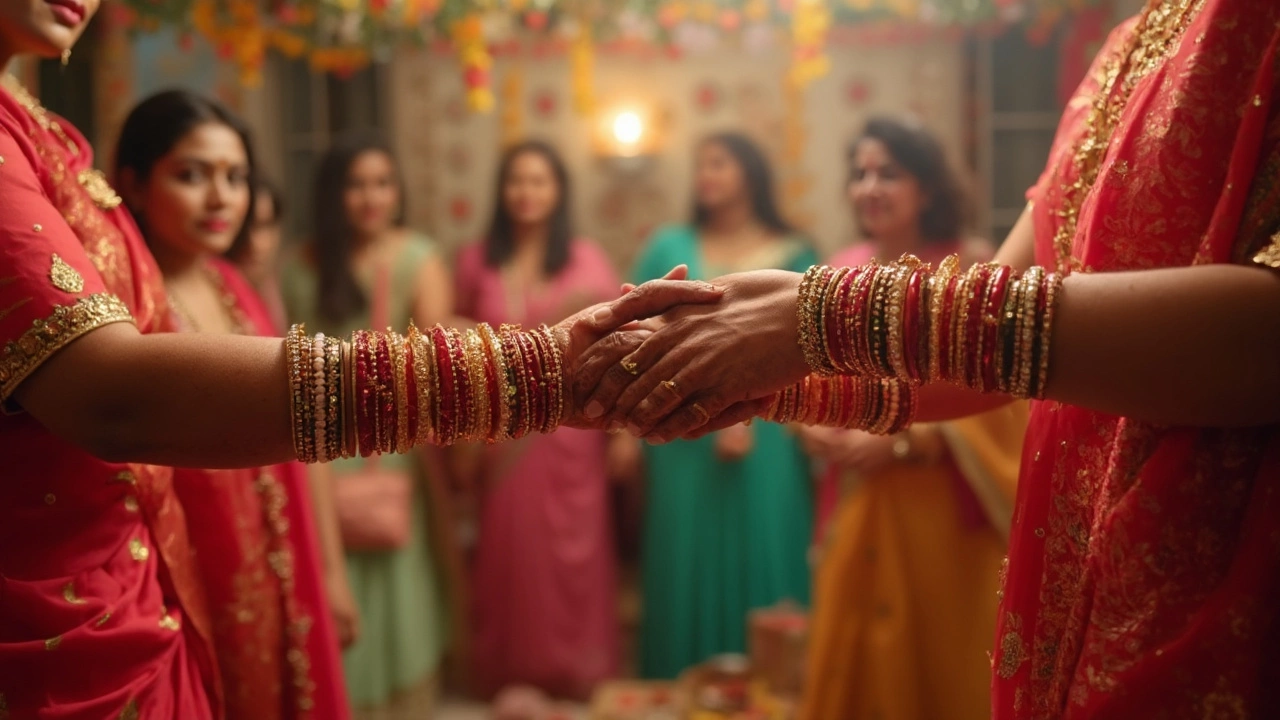
Ever notice how a set of bangles can tell you someone’s story before a word is even spoken? In India and across South Asia, the number of bangles on a married woman’s wrist says more than just "I’m married." It’s about tradition, celebration, social rules, and sometimes even superstition. But is there really a magic number of bangles a married woman must wear? Let’s clear up the mystery, bust some myths, and bring a few surprising facts into the mix.
The Cultural Roots and Customs of Wearing Bangles
Walk down any street in Jaipur or Hyderabad and the shimmer of bangles flashes in shop windows, on wrists, and in wedding photos everywhere. Here in the UK, families keep the tradition alive, especially during celebrations. But where did this idea of married women wearing bangles actually start?
Bangles date back to ancient civilizations. Archaeologists have uncovered bangles made of terracotta, shell, glass, gold, and even copper at digs in Mohenjo-daro—a bustling city from the Indus Valley civilization, nearly 5000 years old. These weren’t just pretty ornaments; they signified different things: status, marital status, community, or even the woman’s age. In most Indian traditions, the moment a woman gets married, the number and color of bangles she wears changes. Every region, community, and family has its own rules.
In North India, especially among Punjabi traditions, married women are expected to wear 'chooda'—a set of red and white bangles. Traditionally, a bride’s maternal uncle gives these bangles, and she wears them for anywhere from 40 days to over a year. Strictly speaking, there’s often 21 bangles on each wrist. That’s 42 in total! But some families do as few as 7 or as many as 51. Why the odd numbers? It’s believed odd numbers bring good luck and fertility—just another example of numbers holding power in tradition.
Head over to Bengal and you’ll spot the ‘shakha’ and ‘pola’—white conch shell and red coral bangles. Here, the minimum is usually one on each wrist, worn together, every day. Breaking them is considered a bad omen. In Rajasthan, the 'ivory bangles' given to brides sometimes reach from the wrist up to the elbow. Married women here traditionally wear a stack that could have more than 20 bangles per arm, symbolizing prosperity and longevity for their husband.
The numbers shift as you go south. Tamil brides don green glass bangles for fertility, but they don’t count them as strictly; it’s more about the color and the act than the exact number. In Gujarat, married women may wear gold bangles, called kadas, but quantity takes a back seat to quality.
When living far from home, like in the UK or USA, many women blend these rules—choosing a number that’s practical and meaningful. Some keep strictly to their family’s ritual, while others go for an updated look, wearing fewer bangles daily but stacking up for festivals.
If you ever get the sense that all these customs are confusing, you’re not wrong. Laws of bangles aren’t set in stone. They morph with family traditions, regional pride, and personal comfort. Yet, one thing stands: bangles are about more than looks. A set on your wrist? That’s marriage, but also hope, health, and happiness—sometimes all at once.
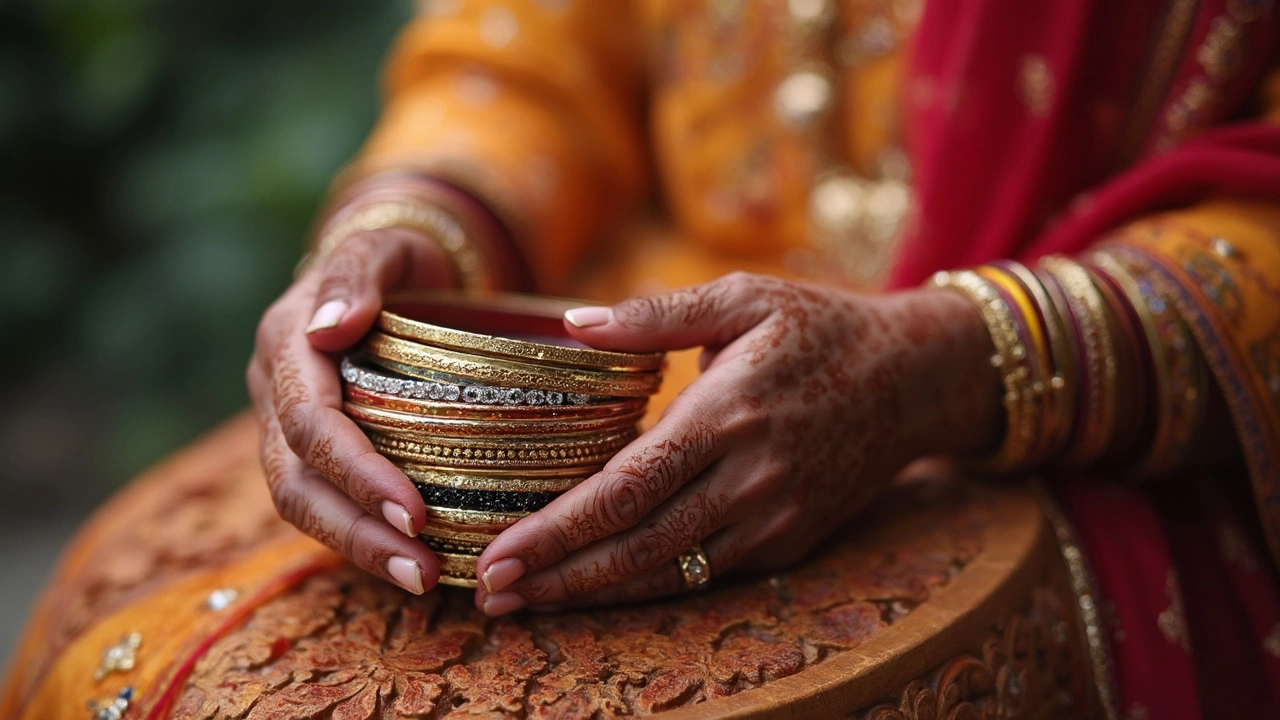
Modern Interpretations: Style, Comfort, and Personal Meaning
Gone are the days when tradition was the only reason for how many bangles a married woman wore. Today's choices are more about comfort, personal expression, and mixing old with new. In Edinburgh, for example, I often see women wearing just two slim bangles with their jeans and jumpers—a nod to heritage, but made practical for work, travel, and the Scottish weather. Fashion influencers, Bollywood stars, and even British-Asian brides mix things up. Some stack chunky gold kadas for weddings. Others pair two glass bangles with a smart watch. There’s no wrong count, so long as it means something to you.
Here’s an interesting tidbit: according to a 2022 report by the All India Gem and Jewellery Domestic Council, more than 60% of urban Indian women now prefer fewer, subtler bangles for daily wear. That’s a huge shift from older generations, who filled both arms up to the elbow, even for everyday chores. Workplaces now demand practical accessories, prompting married women to swap 20-odd bangles for two or three—a “minimum tradition,” if you will.
You might think, does that mean the meaning is lost? Not really. Many married women say that wearing even one or two bangles each day reminds them of their roots—and sometimes of their mother or grandmother’s advice. Others swap colors and styles seasonally, or match with their partner for fun. It’s about connection, not just culture.
Let’s look at real-life choices. Nisha, a software engineer working in London, told me she wears two gold bangles her mother gifted her on her wedding day. “I travel a lot and sit at a keyboard, so a stack would be impossible. These two are all I need—one from my mum, one from my mother-in-law. It’s like carrying them with me everywhere.”
Worried about fashion rules? There aren’t any. Style experts recommend matching bangles with your wardrobe, skin tone, or even mood. Want to stand out at a party? Stack as many as you like, in every color you can find. Prefer a whisper of tradition? Just pick bangles that click together softly.
| Region/Community | Typical No. of Bangles | Occasion |
|---|---|---|
| Punjabi (Chooda) | 21 per arm | Wedding, post-wedding rituals |
| Bengali (Shakha Pola) | 1 or 2 per arm | Worn daily |
| Gujarati (Gold Kadas) | 2-4 | Festivals, daily wear |
| Rajasthani | Up to 20+ | Wedding, daily (traditionally) |
| Modern (UK/USA) | 2-6 | Daily/Festive |
Comfort is a big deal. Doctors even warn that heavy stacks can be tough on wrists, especially if you work at a computer. Dermatologists recommend hypoallergenic metals and glass for sensitive skin. Some brands now make “everyday” bangles—silicone, lightweight steel, even wood—that hold up to modern life.
You don’t have to part with the drama of sound, either. You can get bangles with soft linings, so you get the look without the noise. For me, the best tip is this: wear what feels right for your routine, and add more for special occasions. No need to chase a number set by someone else’s tradition, unless you want to honor it yourself.
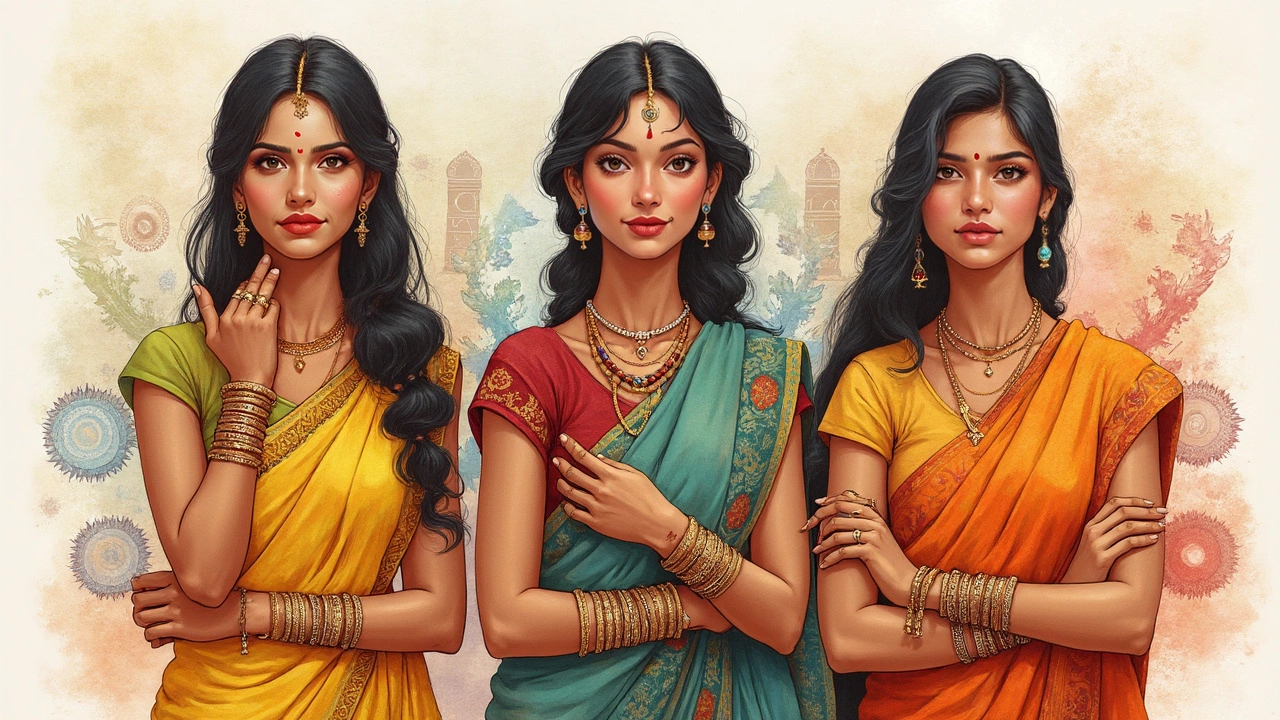
Symbolism, Superstition, and Breaking Out of Old Moulds
Bangles aren’t just style statements; they’re layered with meaning. Ask any mother-in-law in India—even today, there’s a belief that keeping bangles unbroken keeps marriage strong. Some families insist a married woman must never let her wrists go bare, especially during festivals or in-laws’ gatherings. The sound of bangles is thought to cheer the home, attract good fortune, and even ward off bad luck.
Certain colors have their own significance. Red equals energy and prosperity, green stands for growth and fertility, gold for wealth, and ivory or white for purity. Mixing these depends on the festival or family occasion. In some parts of Maharashtra and Andhra Pradesh, a married woman wears green glass bangles to bring happiness, and breaking one can be so unlucky that women carry a spare pair everywhere during wedding season.
But beliefs aren’t what they used to be. Younger generations are starting to break a few old rules. Some women are quietly ditching the "always-wear" dictum—sometimes out of convenience, sometimes as empowerment. In a 2023 survey by Vogue India, over 70% of urban married women said the number of bangles they wear isn’t about superstition anymore, but about "making tradition my own."
Of course, some customs linger. I remember, back at a wedding in Edinburgh, hearing an aunt whisper, “If the bride doesn’t sleep in her bangles tonight, her marriage won’t last the year.” Superstitions still have their place, but it’s usually more about honoring elders than real fear. Besides, the reality is that most urban professionals take a break from bangles when practicality demands it. That doesn’t mean the magic is gone—it just lives in new forms.
For anyone curious about what’s truly "required," the answer is simple: There’s no global minimum or maximum. Some regions say only an odd number brings luck. Others insist on paired sets. In the end, the right number is the one that feels comfortable, meaningful, and true to you. Reflecting on the changing rules, fashion historian Dr. Ritu Kumar once told Harper’s Bazaar,
"Traditions evolve—what matters most is holding on to the meaning, even as the forms change."
If you’re shopping for your own set or for a friend, remember these tips:
- Ask about family or community customs—sometimes one bangle is all it takes, or a complete set may be non-negotiable.
- Pick hypoallergenic materials for daily wear, especially if you have sensitive skin.
- Save heirloom pieces for special occasions, and don’t worry about matching colors every time.
- Don’t stress the numbers—wear what feels right, whether it’s two slim bands or a cheerful clatter of twenty.
- If tradition is important but not practical, consider wearing a single special bangle every day and layering up on festivals.
The simple act of putting on a bangles for married women—whether it’s one or dozens—keeps a kind of magic from the old world alive in new ways. It’s about comfort, style, history, and a splash of superstition, but most of all, it’s about feeling connected to something bigger than fashion trends.

